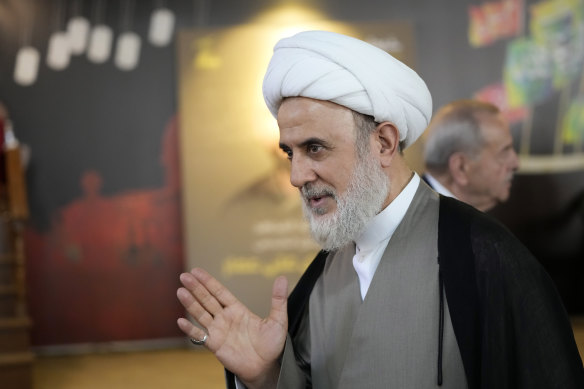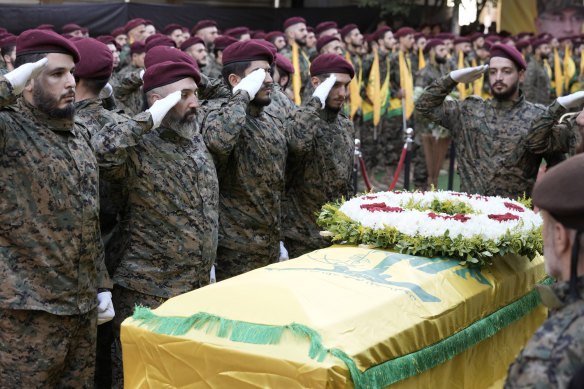
Nabil Kaouk

Hezbollah official Sheik Nabil Kaouk.Credit: AP
Kaouk, who was killed in an airstrike Saturday, was the deputy head of Hezbollah’s Central Council. He joined the militant group in its early days in the 1980s.
Kaouk also served as Hezbollah’s military commander in south Lebanon from 1995 until 2010.
He made several media appearances and gave speeches to supporters, including in funerals for killed Hezbollah militants. He had been seen as a potential successor to Nasrallah.
Ibrahim Akil

Hezbollah members salute near the coffin of Hezbollah commander Ibrahim Akil.Credit: AP
Akil was a top commander and led Hezbollah’s elite Radwan Forces, which Israel has been trying to push further away from its border with Lebanon. He was also a member of its highest military body, the Jihad Council, and for years had been on the United States’ wanted list. The US State Department says Akil was part of the group that carried out the 1983 bombing of the US Embassy in Beirut and orchestrated the taking of German and American hostages.
Ahmad Wehbe
Wehbe was a commander of the Radwan Forces and played a crucial role in developing the group since its formation almost two decades ago. He was killed alongside Akil in an airstrike in Beirut’s southern suburbs that struck and leveled a building.
Ali Karaki
Karaki led Hezbollah’s southern front, playing a key role in the ongoing conflict. The US described him as a significant figure in the militant group’s leadership. Little is known about Karaki, who was killed alongside Nasrallah.
Mohammad Surour
Surour was the head of Hezbollah’s drone unit, which was used for the first time in this current conflict with Israel. Under his leadership, Hezbollah launched exploding and reconnaissance drones deep into Israel, penetrating its defense systems which had mostly focused on the group’s rockets and missiles.
Ibrahim Kobeissi
Kobeissi led Hezbollah’s missile unit. The Israeli military says Kobeissi planned the kidnapping and murder of three Israeli soldiers at the northern border in 2000, whose bodies were returned in a prisoner swap with Hezbollah four years later.
Who is left?
Nasrallah’s second-in-command Naim Kassem is the most senior member of the organisation. Kassem has been Hezbollah’s deputy leader since 1991, and is among its founding members. On several occasions, local news networks were quick to assume that an Israeli strike in southern Beirut may have targeted Kassem.
Loading
Kassem is only top official of the militant group who has conducted interviews with local and international media in the ongoing conflict. The deputy leader appears to be involved in various aspects of the militant group, both in top political and security matters, but also in matters related to Hezbollah’s theocratic and charity initiatives to the Shia Muslim community in Lebanon.
Meanwhile, Hashim Safieddine who heads Hezbollah’s central council, is tipped to be Nasrallah’s successor. Safieddine is a cousin of the late Hezbollah leader, and his son is married to the daughter of Iranian Gen. Qassem Soleimani, who was slain in a US drone strike in 2020. Like Nasrallah, Safieddine joined Hezbollah early on and similarly wears a black turban.
Talal Hamieh and Abu Ali Reda are the two remaining top commanders from Hezbollah who are alive and apparently on the Israeli military’s crosshairs.
AP



























